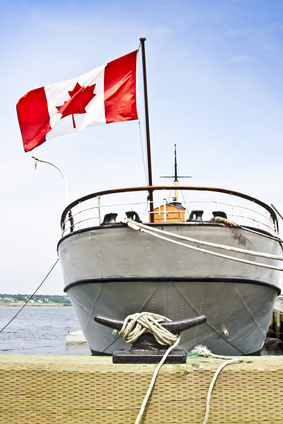It may be cold now, but in a few short months, boaters will be setting sail on Canada’s majestic waters. This timeless passion provides boaters with the chance to fish, explore and enjoy Canada from a new perspective. Boating isn’t the kind of hobby you pick up on a whim, however. It demands hours of preparation and a sizeable budget—especially if you’re looking to buy a boat. Spend time learning your craft in the classroom and on the water before you venture out toward the Canadian horizon. This crash course will point you in the right direction.
Learning the Ropes
Have an experienced boater give you an introduction to the water. You’ll get a feel for the tasks associated with driving a boat, and your mentor can answer any questions you may have. If you don’t know anyone who has a boat, tourism firms offer boat tours through scenic Canadian waters. Buddy up with the captain and observe professional boating firsthand. Depending on the boat, you’ll learn the ins and outs of sails, ropes, knots, engines and steering. You’ll also get an inside look at safety procedures—the most important element of boating. The more time you spend on the water with experienced sailors, the better out you’ll be when it’s time to hit the water solo.
Getting Licensed
Operators of recreational powered watercrafts in Canada need Pleasure Craft Operator Cards (otherwise known as boating licenses). You can get certified online through interactive boating courses. Study the online material, pass the online exam and print your boating license to set out on the water immediately. This training will provide a more detailed foundation of information. After becoming licensed, you will feel confident in your knowledge of boating laws and etiquette. Now is the time to take that knowledge on the water and hone your skills.
Drifting Into International Waters
At some time during your exploration of the sea, the may end up drifting into international waters. Turn around if you’re not interested in exploring further, but if you’re looking to venture on, you’ll need a few things. First, declare your possessions and make sure your boat doesn’t have any questionable products. Bring a passport and your boating license to present at the border. If you plan on boating between Canada and the US frequently, the Nexus card provides Canadian and US citizens faster clearance at ports. With this card, a simple phone call will get you through security.
Stocking Up
Recreational boating requires an array of supplies to stay safe and upright. Make sure you have at least these basics before you push off from the dock:
- Docking ropes: You’ll need at least two (preferably four) 10-inch long ropes to tie up when you land at the dock.
- Anchor and chain: If you plan on dropping anchor to fish or relax, this is a must. You’ll also need an anchor buoy to make where your anchor is located.
- Life vests: Make sure your boat is equipped with Coast Guard Approved (CGA) life vests in case of an accident.
- First aid kit: Safety is the top priority on the water. Don’t set out without a first aid kit.




Leave a Reply